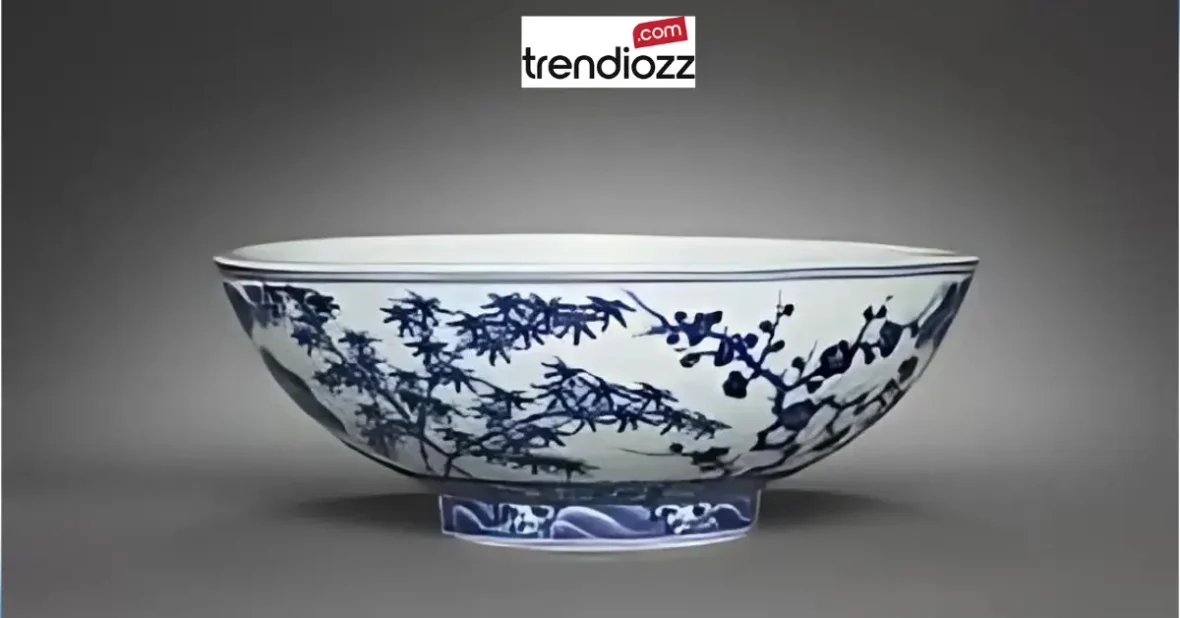Eating should be a joy, but how often do we think about the humble bowl in this experience? You might be surprised at how much a bowl’s design impacts your comfort and even the enjoyment of your meal. Whether you’re indulging in a piping hot ramen or savoring a fresh salad, the way your bowl is crafted can change everything. That’s where the concept of best bowls ergonomics comes in, helping you enjoy your meals with greater comfort, convenience, and style.
In this comprehensive guide, we’re going to explore what makes the best bowls ergonomics, from their shape and size to the materials used. Let’s dive in and discover how this small change can make a big difference in your dining experience.
What Are Ergonomic Bowls?
Ergonomic bowls are designed with human comfort in mind. Ergonomics itself refers to designing objects to fit the human body’s natural posture and movement. In the case of bowls, this means creating shapes that are comfortable to hold, easy to scoop from, and pleasant to eat from.
Think about your favorite bowl at home. Why do you love it? Perhaps it’s the size, the way it feels in your hand, or how it cradles your food perfectly. All these elements contribute to ergonomics, and when done well, they elevate the mealtime experience. Bowls designed with ergonomics in mind are comfortable for prolonged use, minimize strain, and often come with features that enhance your overall experience—like thicker rims, smooth textures, and easy-to-hold designs.
The Importance of Bowl Design in Ergonomics
Bowl design isn’t just about aesthetics; it’s about function. When we talk about the best bowls ergonomics, we’re looking at how the bowl interacts with the human body. This can affect your hand grip, wrist angle, and even how easy it is to eat without spilling.
Comfort in Holding the Bowl
One of the biggest factors in bowl ergonomics is how comfortable it is to hold. Imagine holding a large, clunky bowl while trying to eat on the go—it’s not ideal. Ergonomically designed bowls often feature a slight curvature that fits naturally into the palm of your hand. This allows for better grip and less effort when eating, reducing strain on your wrists and fingers.
Bowl Shape and Depth
The shape and depth of a bowl can make a world of difference when it comes to ergonomics. Shallow, wide bowls are great for meals like pasta or salads where you want a good surface area to mix and toss without spilling. Deep bowls, on the other hand, are perfect for soups and stews, giving enough depth to contain liquids without the risk of spills. The best bowls ergonomics ensure that both the shape and depth are suited to the type of meal, making it easier to serve, eat, and enjoy your food.
Choosing the Right Material for Ergonomic Bowls
Materials matter a lot when it comes to bowl ergonomics. Lightweight materials, like bamboo or melamine, are easier to hold and less fatiguing, especially during longer meals. On the other hand, ceramics or glass bowls offer more stability but may be heavier. Finding the right balance is key to getting the best bowls ergonomics for your lifestyle.
Ceramic Bowls: Classic and Ergonomic
Ceramic is a popular material choice for ergonomic bowls due to its durability and weight. While they are heavier than plastic or bamboo, ceramic bowls often come with thicker edges and bases, which add stability when you’re using them for meals that require a lot of cutting or mixing. Plus, the smooth texture of ceramics enhances the overall eating experience by making the bowl comfortable to touch and hold.
Melamine and Bamboo Bowls: Lightweight and Versatile
If you’re looking for lightweight options, melamine or bamboo bowls are excellent choices. These bowls are ideal for outdoor dining, kids, or anyone who might need a more portable option. Melamine bowls are durable, resistant to chipping, and dishwasher-safe, making them a great everyday choice. Bamboo bowls, while eco-friendly, provide a more natural look and feel while also being lightweight.
How Ergonomic Bowls Affect Eating Habits
Here’s something you might not have thought about: the best bowls ergonomics can actually influence your eating habits. Think about the last time you ate from a bowl that didn’t quite “fit.” Maybe the rim was too thin, making it hard to grip, or the shape made scooping food awkward. These small inconveniences can lead to frustration, affecting your mood and even how much you enjoy the meal.
Eating Mindfully
An ergonomic bowl promotes mindful eating. By having a bowl that fits comfortably in your hand, allows for easy access to your food, and minimizes spillage, you’re more likely to eat slowly and savor each bite. This not only improves your dining experience but also helps with digestion and portion control.
Enhancing Presentation
The best bowls ergonomics aren’t just about function; they also help enhance the presentation of your meal. A well-designed bowl can make your food look more appealing, which in turn, makes you more excited to eat. We consume with our eyes first, after all. Bowls that provide the right shape for portioning and presenting your meal beautifully can add to the overall experience, making it more enjoyable and satisfying.
Features to Look for in Ergonomic Bowls
Not all bowls are created equal. When selecting a bowl with best bowls ergonomics, keep an eye on the following features to ensure comfort and practicality:
1. Wide, Stable Base
A stable base ensures the bowl won’t tip over easily, especially if you’re mixing or stirring your food.
2. Thick Rims
A thicker rim provides a better grip and makes it easier to sip directly from the bowl, particularly with soups or broths.
3. Gentle Curves
A curved interior is essential for easy scooping. Bowls with sharp angles can make it difficult to get the last bit of food out.
4. Lightweight Design
Especially important for individuals with mobility issues or those who like to eat on the go, a lightweight design makes holding and handling the bowl easier.
5. Non-slip Bottom
Some bowls come with silicone grips or other non-slip materials on the bottom, ensuring they stay firmly in place while you eat.
How to Incorporate Ergonomic Bowls Into Your Home
Incorporating the best bowls ergonomics into your daily life doesn’t require a complete kitchen overhaul. Start by identifying your most-used bowls and evaluating whether they meet ergonomic standards. Do they feel comfortable to hold? Are they stable on your table or lap? If not, it might be time for an upgrade.
Consider purchasing a variety of bowls for different types of meals. A deep, ergonomic bowl for soups and stews, a wide, shallow bowl for salads, and a smaller, lightweight bowl for snacks or cereal can all improve your dining experience.
Conclusion: Why You Should Invest in the Best Bowls Ergonomics
The next time you’re shopping for kitchenware, don’t overlook the importance of ergonomics. Investing in the best bowls ergonomics can drastically improve your dining experience, making every meal more comfortable and enjoyable. Whether you prioritize comfort, style, or practicality, there’s an ergonomic bowl out there that fits your needs. And trust me, once you switch to an ergonomic design, you’ll never go back to your old bowls again!
FAQs About Ergonomic Bowls
Q: What makes a bowl ergonomic?
A: An ergonomic bowl is designed to fit comfortably in the hand, allowing for ease of use during mealtime without causing strain. The best bowls ergonomics take into account the shape, size, and material to ensure comfort.
Q: Are heavier bowls better for ergonomics?
A: Not necessarily. Heavier bowls provide stability, but they may also cause strain if held for extended periods. Lighter materials like melamine or bamboo can be better for certain uses.
Q: Can ergonomic bowls help with portion control?
A: Yes! The right-sized bowl can help you control portions better by giving you a visual guide to how much you are eating, promoting healthier habits.
Q: Do ergonomic bowls cost more than regular bowls?
A: It depends on the material and design. While some high-end ergonomic bowls can be pricier, there are plenty of affordable options that still prioritize comfort and usability.










